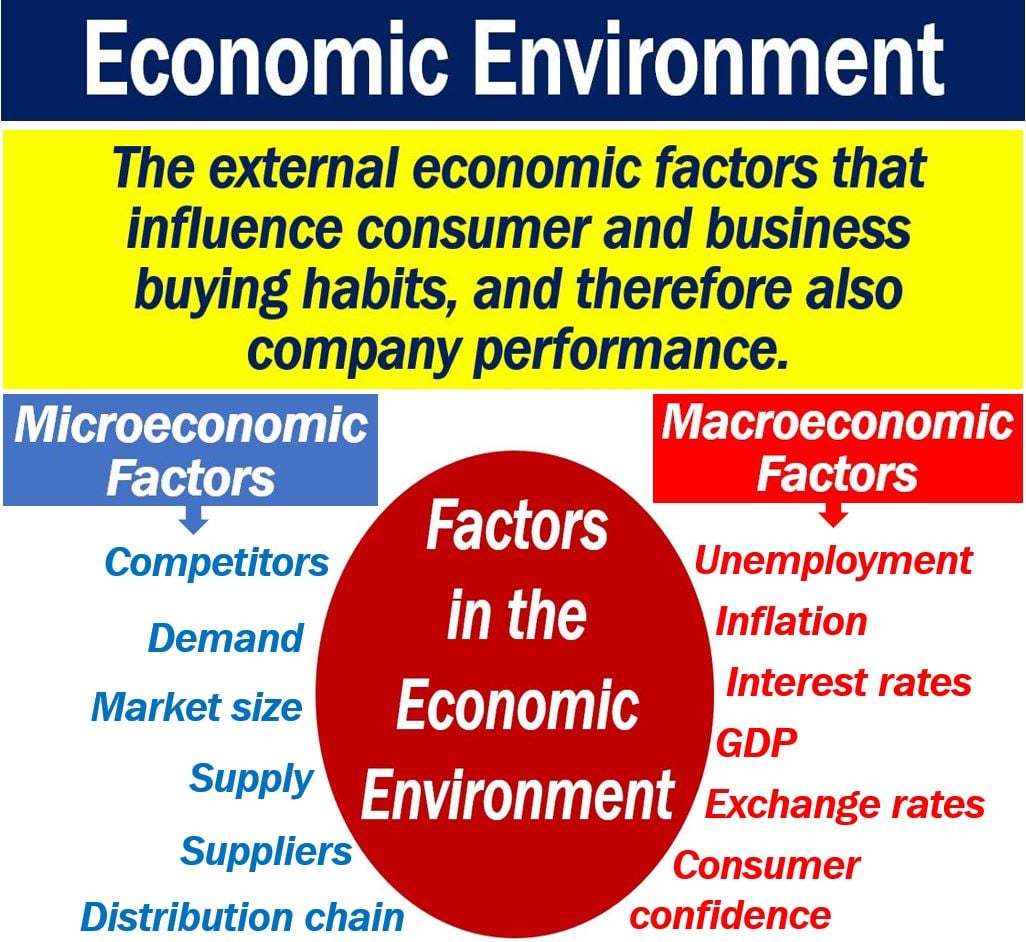The Economic Environment refers to all the economic factors that affect commercial and consumer behavior. The economic environment consists of all the external factors in the immediate marketplace and the broader economy. These factors can influence a business, i.e., how it operates and how successful it might become.
The economic environment consists of different things for different people. For example, for a farmer, the weather and price of fertilizers are important factors.
For a TV channel on the other hand, the growth in Internet advertising matters a great deal, but not the weather. Internet advertising matters to a TV station because the Internet competes for advertising business. For a farmer, however, advertising media is not important.
Technological advancements and shifts in consumer preferences can dramatically reshape the economic environment, often creating new opportunities for some sectors while posing challenges for others.
Put simply, economic environment includes all the outside financial factors that can affect how people and businesses spend money, which in turn impacts how well a company does.
These factors can be big, like inflation or interest rates (called macro), or smaller, like local market trends (called micro). Most of the time, these things are outside the company’s control, but they still have a big influence on its success.

Economic environment – factors
The economic environment consists of microeconomic and macroeconomic factors.
Microeconomic factors
The microeconomic environment refers to things that happen at the individual company or consumer level.
Microeconomic factors do not affect the whole economy. Below are some microeconomic factors that may influence a business:
- Competitors.
- Demand.
- Market size.
- Suppliers.
- Supply.
- How you supply your goods, i.e., the distribution chain. For example, through retail stores, distributors, the Internet, etc.
Macroeconomic factors
The macroeconomic environment, on the other hand, refers to things that affect the entire economy. Macroeconomics is concerned with general or large-scale economic factors, such as:
- Unemployment
- Inflation.
- Interest rates.
- GDP growth. GDP stands for Gross Domestic Product. In other words, is the economy in recession, is it booming, etc.?
- Taxes.
- Exchange rates, i.e., how much currencies are worth in relation to one another.
- How much discretionary income consumers have, i.e., income after paying tax, social security, etc.
- Levels of consumer confidence.
- Savings rates.
Business people cannot control their economic environment. However, they can evaluate conditions in the marketplace before deciding whether to proceed with a plan or project.
In this context, the term ‘marketplace‘ means the same as ‘market‘ in its abstract sense.
Economic environment vs. environmental economics
Do not confuse the term ‘economic environment’ with ‘environmental economics.’ Although they sound similar, their meanings are quite different.
Environmental economics, a sub-field of economics, is all about environmental issues. Since the second half of the last century, environmental economics has become an increasingly popular topic.
Environmental economics looks at the economic effects of local or national environmental policies across the globe. Particular issues include the costs and benefits of alternative environmental policies that deal with water quality, air pollution, and global warming.
Moreover, the discipline examines the allocation of environmental resources through economic principles to achieve sustainable development goals.
Additionally, environmental economics is concerned with finding equitable solutions for the distribution of environmental benefits and costs among different communities and generations.
